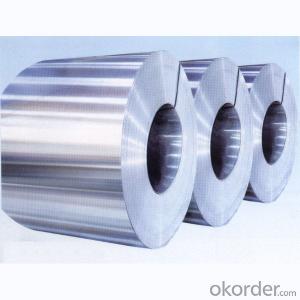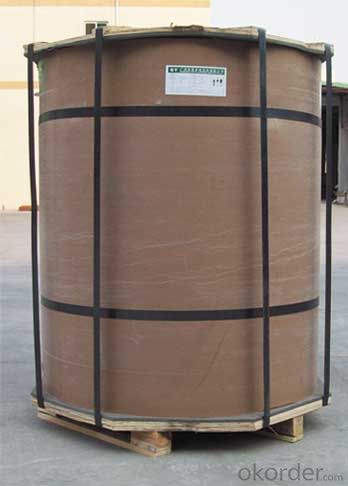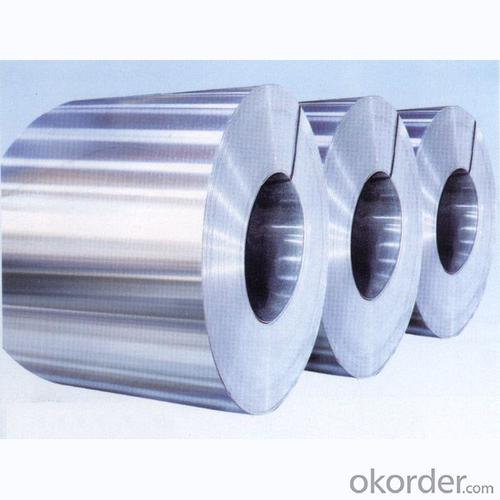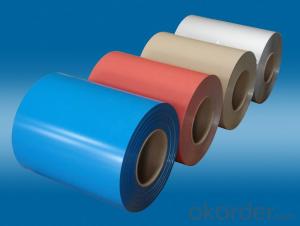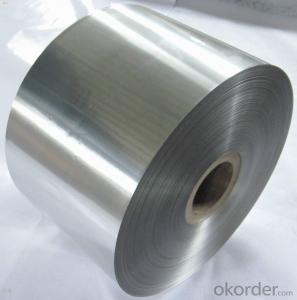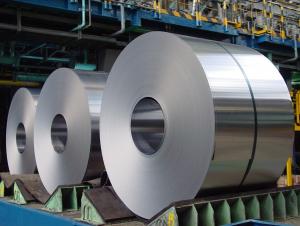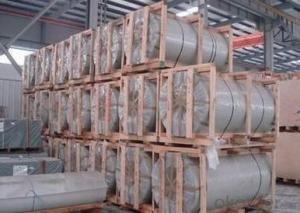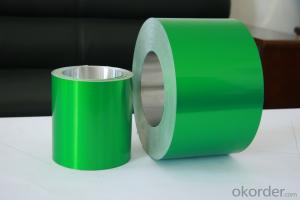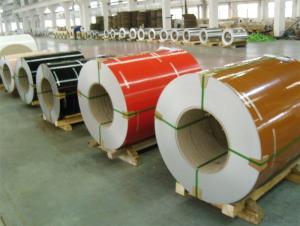Vinyl Coated AA1050 Aluminum Coil Stock for Construction
- Loading Port:
- Shanghai
- Payment Terms:
- TT OR LC
- Min Order Qty:
- 5 m.t.
- Supply Capability:
- 10000 m.t./month
OKorder Service Pledge
OKorder Financial Service
You Might Also Like
1.Structure of AA1050 Aluminum Coils used on Construction Description
AA1050 Aluminum Coils used on Construction has great ductility, heat conductivity, anti-corrosion and moisture resistance properties.
AA1050 Aluminum Coils used on Construction is widely used for electronics, instruments, lighting decoration, packing industry, house decoration, curtain wall, honeycomb-core panel, sandwich panel, aluminum composite panel and aluminum composite pipes.
2.Main Features of AA1050 Aluminum Coils used on Construction
• Superior quality of raw material
• Reasonable and stable chemical composition
• Accurate tolerance
• Goode mechanical property
3.AA1050 Aluminum Coils used on Construction Images
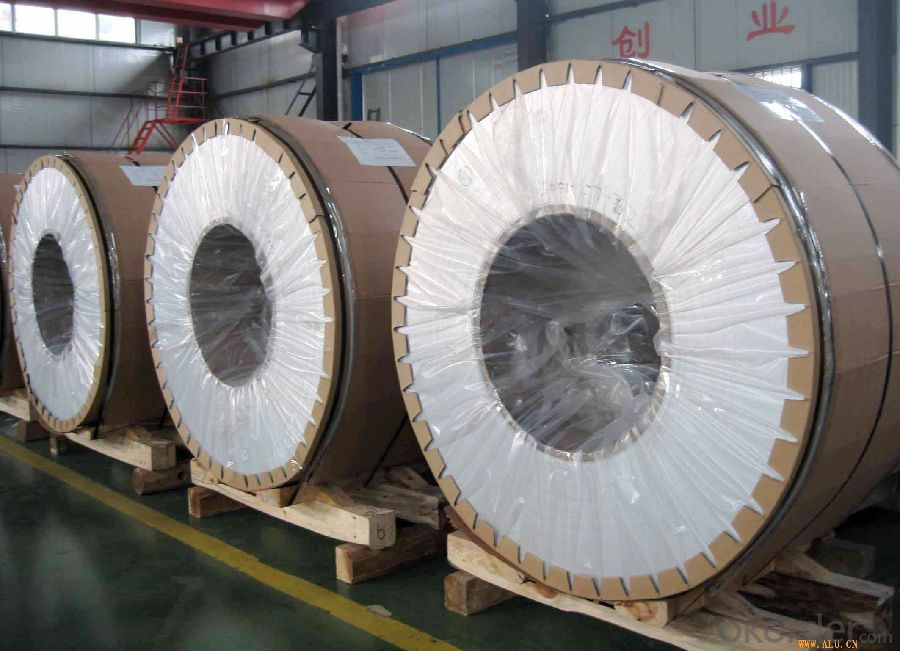
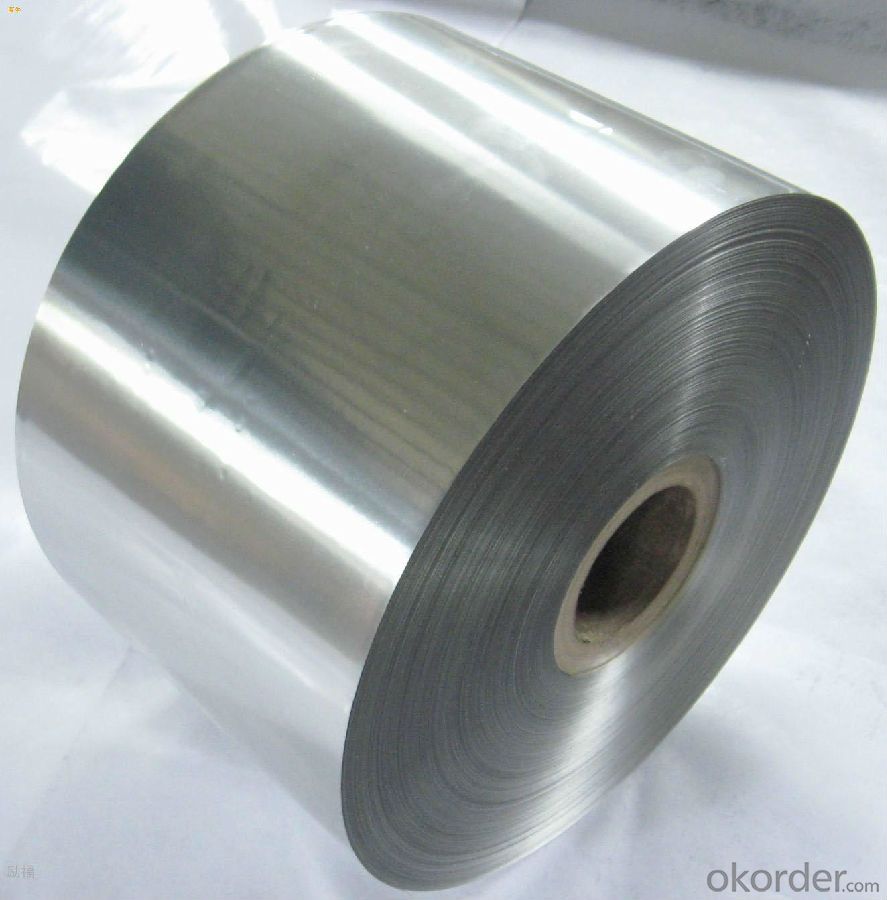
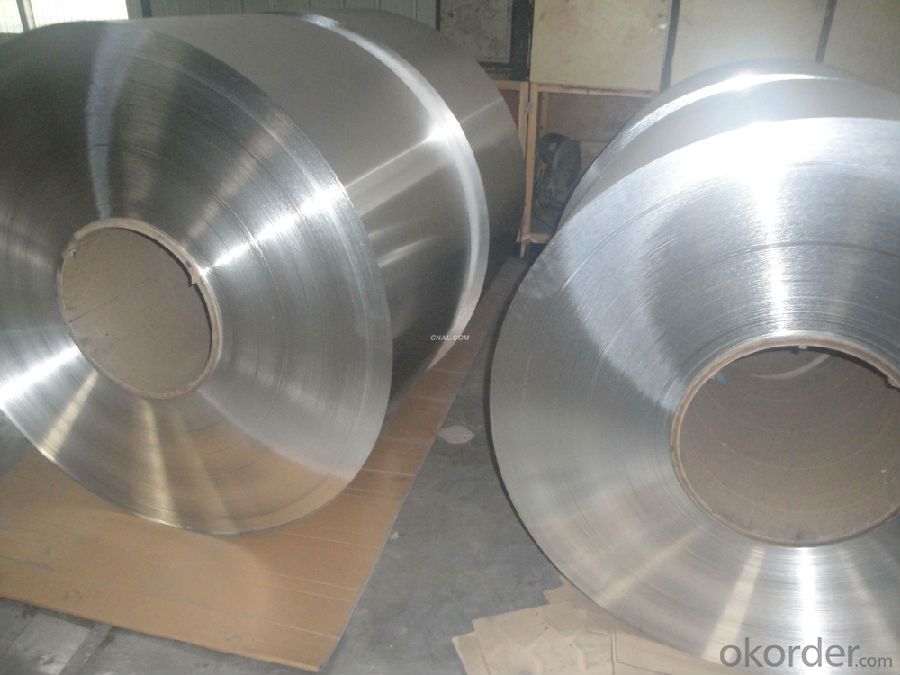
4.AA1050 Aluminum Coils used on Construction Specification
Alloy | A1050 |
Temper | H14, H16, H18, H22, H24, H26, H32, O/F |
Thickness | 0.2mm -- 100mm |
Width | 30mm -- 1700mm |
Standard | GB/T 3880-2006,EN,ASTM,JIS |
5. FAQ of AA1050 Aluminum Coils used on Construction
A.How to guarantee the quality?
Customers are welcome to our mill to visit and check the products. Besides, we can arrange a third party to test AA1050 Aluminum Coils used on Construction.
B.When will you deliver the products?
AA1050 Aluminum Coils used on Construction will be delivered within 35 days after receiving advanced payment or original L/C.
- Q: what language did Aluminum and Uranium originate from ? Who or what were they named for ?
- The ancient Greeks and Romans used alumen (alum, potassium aluminium sulfate, K2Al6(OH)12(SO4)4) in medicine as an astringent, and as a mordant in dyeing. Alum was exported from ancient Greece and Italy. In 1761 the French chemist Louis-Bernard Guyton de Morveau (1737-1816) proposed the name alumine for the base in alum. Guyton de Morveau was instrumental in setting up a standardised system for chemical nomenclature and often collaborated with Antoine Lavoisier, who in 1787, suggested that alumine was the oxide of a previously undiscovered metal. In 1808, Sir Humphry Davy (1778-1829) did experiments for the decomposition of alumine, silex, zircone, and glucine. He failed to isolate the metals in these, as he reported in his paper for the Royal Society of London on 30 June 1808, but he suggested names for the metals (note) Cf. Silicium, Zirconium, and Beryllium (Glucium) Thus he proposed the name alumium for this still undiscovered metal and later agreed to change it to aluminum. Shortly thereafter the name aluminium was adopted to conform with the -ium ending of most elements. Uranium was named by its discoverer German chemist Martin Klaproth, after the last planet to have been discovered Uranus.
- Q: What are the different joining methods for aluminum coils?
- There are several different joining methods for aluminum coils, depending on the specific application and desired strength of the bond. Some of the common joining methods for aluminum coils include: 1. Welding: Aluminum can be welded using different techniques such as TIG (Tungsten Inert Gas) welding, MIG (Metal Inert Gas) welding, or laser welding. Welding provides a strong and durable bond between the coils, ensuring structural integrity. 2. Brazing: Brazing involves melting a filler material, usually a copper-based alloy, to join two aluminum coils. This method is suitable for joining thin aluminum coils and provides a strong and leak-proof bond. 3. Adhesive bonding: Adhesive bonding is a non-destructive joining method that involves using a high-strength adhesive to bond the aluminum coils together. This method is often used when aesthetics and surface finish are crucial, as it does not require any visible welding or brazing marks. 4. Mechanical joining: Mechanical joining methods include techniques like riveting, clinching, and using fasteners like screws or bolts. These methods provide a reliable and easily reversible bond, making them suitable for applications where disassembly may be required. 5. Roll bonding: Roll bonding is a process where two or more aluminum coils are passed through a rolling mill under high pressure, resulting in the creation of a single composite coil. This method is commonly used for joining dissimilar metals or creating laminated structures with different alloy combinations. Each joining method has its advantages and limitations, and the choice of method depends on factors such as the desired strength, cost, production volume, and specific application requirements. It is important to consider these factors carefully to ensure the most suitable joining method is selected for aluminum coil applications.
- Q: What is the common color of aluminum coil membrane?
- The blue transparent membrane is the most common.
- Q: Can aluminum coils be utilized as materials for constructing roofs?
- <p>Yes, aluminum coils can be used for roofing materials. They are known for their durability, corrosion resistance, and lightweight properties, making them an excellent choice for roofing. Aluminum's reflective surface also helps in energy efficiency by reflecting sunlight and reducing heat absorption. It's recyclable and has a long lifespan, which contributes to its sustainability. However, it's important to ensure that the aluminum coils are of the appropriate gauge and quality for the specific roofing application to guarantee structural integrity and performance.</p>
- Q: How do aluminum coils contribute to improved building aesthetics?
- Aluminum coils contribute to improved building aesthetics by offering a sleek and modern appearance. The malleability of aluminum allows for the creation of various architectural shapes, enhancing the overall design of the building. Additionally, aluminum coils can be coated with different finishes, colors, and textures, providing versatility and customization options to match the desired aesthetic requirements.
- Q: How are aluminum coils installed in various applications?
- Aluminum coils are installed in various applications using different methods depending on the specific requirements and the nature of the application. Here are a few common methods used for installing aluminum coils: 1. HVAC Systems: In heating, ventilation, and air conditioning (HVAC) systems, aluminum coils are commonly used for heat transfer. These coils are typically installed inside the air handling units or the condensing units. The installation process involves securing the coils in the designated space, connecting them to the refrigerant lines, and ensuring proper insulation and sealing to prevent any leaks. 2. Refrigeration: In refrigeration systems, aluminum coils are used to transfer heat and facilitate the cooling process. The coils are usually installed within the evaporator or condenser units. The installation process involves mounting the coils securely, connecting them to the refrigerant lines, and making sure that all components are properly insulated and sealed. 3. Heat Exchangers: Aluminum coils are widely employed in heat exchangers for various industrial applications. These coils are installed within the heat exchanger unit, which can be either a shell and tube design or a plate and frame configuration. The installation process involves positioning the coils within the exchanger, connecting them to the appropriate piping and fittings, and ensuring proper alignment and sealing. 4. Automotive Radiators: Aluminum coils are extensively used in automotive radiators for efficient heat dissipation. The installation process involves mounting the coils within the radiator assembly, connecting them to the coolant lines, and ensuring proper alignment and sealing to prevent any leakage. 5. Electrical Transformers: In electrical transformers, aluminum coils are utilized for efficient power transmission and electrical insulation. The installation process involves winding the aluminum coils around the transformer core, connecting them to the appropriate terminals, and ensuring proper insulation and grounding. In all these applications, it is crucial to follow industry standards and guidelines to ensure the proper installation of aluminum coils. This includes considering factors such as structural support, proper alignment, connection integrity, insulation, and sealing to achieve optimal performance and longevity.
- Q: Can aluminum coils be used in automotive applications?
- Automotive applications can indeed utilize aluminum coils. Given their lightweight nature, aluminum coils prove to be an exceptional option for automotive manufacturers, aiding in the reduction of overall vehicle weight. Consequently, this reduction can lead to enhanced fuel efficiency and performance. In addition, the outstanding heat conductivity of aluminum coils becomes indispensable in automotive applications, particularly when it comes to heat dissipation. Furthermore, the commendable corrosion resistance of aluminum coils proves to be highly advantageous in automotive applications, specifically when vehicles are exposed to diverse weather conditions and road salts. All in all, the utilization of aluminum coils in automotive applications offers numerous benefits, including weight reduction, improved fuel efficiency, superior heat dissipation, and enhanced corrosion resistance.
- Q: How are aluminum coils tested for quality and performance?
- Aluminum coils are tested for quality and performance through a series of rigorous inspection processes. These tests aim to assess the mechanical, chemical, and physical properties of the coils to ensure they meet the required standards. One common test conducted is the visual inspection, where trained technicians examine the surface of the aluminum coils for any visible defects such as scratches, dents, or irregularities in shape. This step is crucial as it helps identify any cosmetic flaws that may affect the overall performance and quality of the coils. Another important test is the dimensional inspection, which involves measuring the thickness, width, and length of the coils to ensure they meet the specified tolerances. This test is critical as it helps guarantee the coils will fit properly in their intended applications and perform optimally. To assess the mechanical properties, various mechanical tests are conducted. One such test is the tensile strength test, which measures the maximum amount of stress a coil can withstand before breaking. This test helps determine the strength and durability of the coils under different operating conditions. Additionally, the hardness test is performed to evaluate the resistance of the coils to indentation or scratching. This test provides insights into the coil's ability to withstand wear and tear, ensuring its longevity. Chemical analysis is another vital aspect of quality testing. The chemical composition of the aluminum coils is examined to ensure it meets the required standards and does not contain any impurities or elements that may compromise the performance or safety of the coils. Furthermore, to assess the thermal properties of the coils, thermal conductivity tests are conducted. These tests measure the coil's ability to conduct heat efficiently, ensuring that it can effectively dissipate heat in applications where it is used. In addition to these tests, other performance evaluations may be conducted depending on the specific application of the aluminum coils. This could include corrosion resistance tests, fatigue tests, or even electrical conductivity tests. These evaluations help determine the coil's ability to perform under different conditions and ensure its reliability and longevity. By subjecting aluminum coils to these comprehensive quality and performance tests, manufacturers can ensure that only the highest quality coils are delivered to customers, meeting their expectations and standards.
- Q: Are there any specific safety guidelines for installing aluminum coils?
- Yes, there are specific safety guidelines for installing aluminum coils. It is important to follow manufacturer instructions and guidelines, wear appropriate personal protective equipment (PPE), and ensure proper handling and storage of the coils. Additionally, one should be cautious of sharp edges and edges of the coils to prevent injuries during installation.
- Q: How are aluminum coils manufactured to specific dimensions?
- Aluminum coils are manufactured to specific dimensions through a series of processes that involve precision engineering and cutting-edge technology. The process starts with the selection of high-quality aluminum ingots, which are then melted and cast into long, flat strips. Once the aluminum is in the form of flat strips, it undergoes a series of rolling operations. The strips are passed through a rolling mill, where they are progressively reduced in thickness and elongated in length. This rolling process helps in achieving the desired dimensions and thickness for the coils. After the initial rolling, the strips are subjected to a process called annealing. Annealing involves heating the aluminum to a specific temperature and then cooling it slowly. This process helps in improving the ductility and reducing the internal stresses in the metal, making it easier to work with in subsequent manufacturing steps. The next step is slitting, where the wide strip is cut into narrower strips of the desired width. This is done using high-precision slitting machines that ensure accurate and consistent dimensions for each coil. The slitting process also involves edge trimming to remove any irregularities and ensure straight edges. Once the narrower strips are obtained, they are coiled using specialized machines. These machines carefully wind the strips into coils of the desired size and shape. The coiling process ensures that the aluminum is tightly wound and securely held in place. To further enhance the dimensional accuracy, the coils may undergo a final leveling process. This involves passing the coils through a leveling machine that applies pressure to flatten any irregularities or distortions in the metal, ensuring a uniform and consistent thickness. Overall, the manufacturing of aluminum coils to specific dimensions requires a combination of precision rolling, slitting, coiling, and leveling processes. These processes, along with advanced machinery and quality control measures, ensure that the final product meets the exact specifications required by the customer.
Send your message to us
Vinyl Coated AA1050 Aluminum Coil Stock for Construction
- Loading Port:
- Shanghai
- Payment Terms:
- TT OR LC
- Min Order Qty:
- 5 m.t.
- Supply Capability:
- 10000 m.t./month
OKorder Service Pledge
OKorder Financial Service
Similar products
Hot products
Hot Searches
Related keywords


